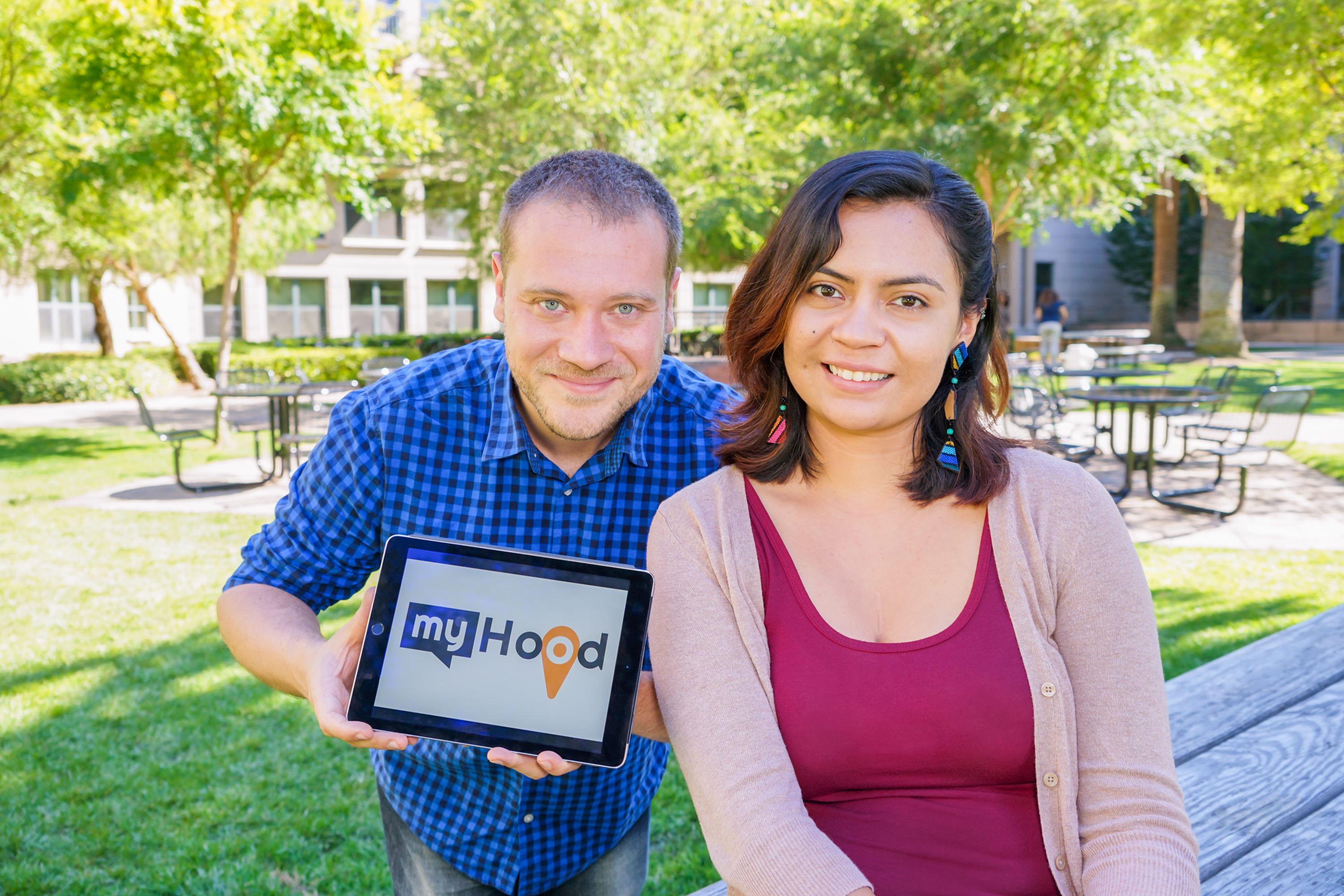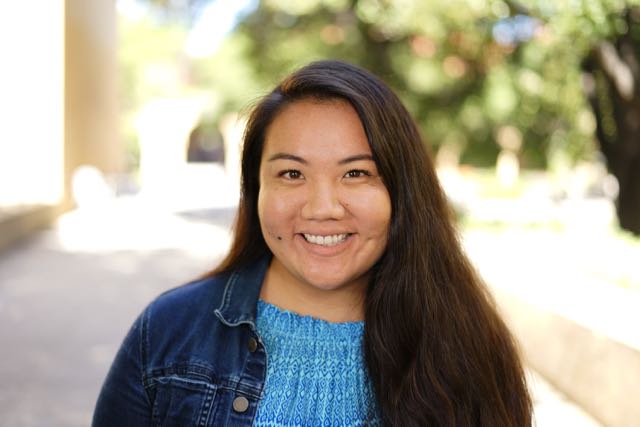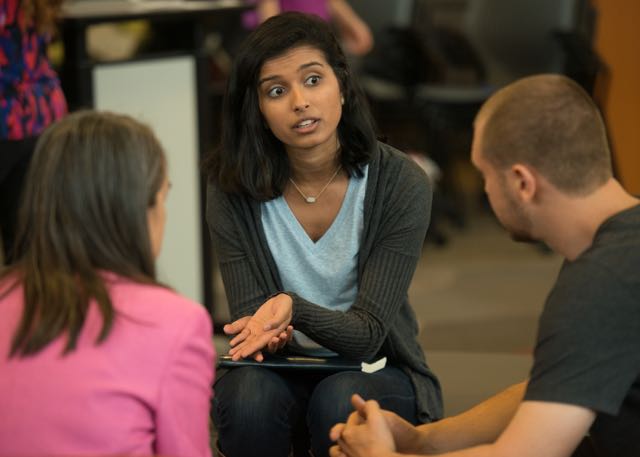


Sonia Doshi sometimes felt at a loss when friends who were feeling anxious or depressed came to her for support. Now she’s developed a game-based app to help other college students in that difficult position build the skills to respond more effectively.
“When it comes to mental health, one of the biggest issues is that people don’t know how to talk about it,” she said. “There’s so much potential for technology and social media to be used as tools to fill these gaps in our education.”
Doshi’s innovation will be one of 14 projects presented next week at the Learning, Design and Technology (LDT) Expo, an event showcasing new learning products developed by master’s students in the LDT program at Stanford’s Graduate School of Education.
The annual exhibition draws an audience of education and technology professionals, potential investors and interested community members.
“The projects represent a year spent thinking deeply about learning,” said Karin Forssell, director of the LDT program. “The design challenges students have chosen address a wide range of topics—for preschoolers to adults, in and out of school.”
Building a circle of support
Doshi’s project brings together twin passions of hers: technology and mental health advocacy. As an undergraduate at the University of Michigan, she conceived and produced “The Mental Health Monologues,” a first-of-its-kind storytelling event where students, staff and faculty gave on-stage performances about personal experiences with mental illness. She also started a national film competition inviting college students to create two-minute videos about dealing with stress and share them on social media.
Her LDT master’s project, “Huddle,” takes a gameful approach to building peer-to-peer support skills. College students join a four- to six-person team for a series of exercises (“drills” and “scrimmages”) to improve their ability to support friends in a variety of real-life situations, with a special focus on identifying and responding to warning signs of mental distress.
“I’m not trying to train them to become therapists,” Doshi said. “But students often turn to a peer before they turn to an adult or a professional if they’re dealing with a mental health problem. It’s a missed opportunity if you, as a friend, don’t know how to effectively respond.”
The app is targeted to dorm-mates in their first year of college, a time when peers are uniquely positioned to notice and address a problem. “You’re doing everything with your friends all the time—living with them, working with them, eating with them,” Doshi said. “They’re in the best position to recognize if something is wrong, and to provide support.”
Making history across generations
For Jana Kaopuiki, a native Hawaiian who grew up with a strong connection to her cultural roots, hearing family stories over the years deeply shaped her own sense of identity.
Her LDT master’s project is designed to help others learn more about the generations before them and, ultimately, about themselves. “Everyone has a story that’s influenced by a history,” she said.
Kaopuiki developed a mobile platform for users of any age to collect, organize and access family stories. The app provides what looks like a virtual deck of trading cards; users customize each card to depict and capture material about a particular family member. Photos, notes, audio files and videos can be uploaded to each card for retrieval anytime, anywhere.
“It’s said that we carry our family with us,” Kaopuiki said. “Here, you can literally carry your family and their stories with you.” The app, called “aniani,” also offers activities and prompts to get conversations started.
The name comes from a Hawaiian word that means both window and mirror, referring to an essay by Rudine Sims Bishop about the importance of diverse stories that act as mirrors and windows to reflect or widen a person’s experience.
Kaopuiki contrasted her project’s approach to other family history services, which she describes as more “determinant” and less about relationship-building through stories. She also noted that the traditional template of a family tree doesn’t necessarily reflect the nature or depth of the bond—for instance, she felt extremely connected to her grandfather’s sister, “but when you see my name and hers on a genealogy chart, the distance is much farther from how I saw our relationship.”
Her hope for the project, she said, is to put links between family members into a more meaningful context, beyond straight lines on paper. “We often think the cleanest way we can draw something is going to be the most valuable,” she said—but even a tree is far more complex in ways we can’t see, as someone pointed out to her while she was developing the project. “The more interconnected and interwoven the roots are, the stronger its hold will be.”
Mapping communities and opportunities
LDT students Leiny Garcia and Fabio Campos teamed up to create “MyHood,” a project that empowers high school students to act on social issues affecting where they live.
Growing up in a low-income neighborhood in Los Angeles, Garcia saw firsthand how education was considered a way for young people to transcend—rather than strengthen—where they came from. “Kids from marginalized communities are often told that education is their ‘ticket’ or gateway out of their neighborhood,” she said. “But it’s a conflicting message considering that it’s also our home, and it’s full of our culture.”
She and Campos wanted to help high school students learn how they could use their knowledge to connect more deeply to their home instead, to more actively engage with it—and to see their neighborhood itself as a powerful learning environment.
Using an interactive mapping system, students can pinpoint local opportunities for improvement—for instance, homelessness or lack of accessibility—and begin formulating ways to address them. Students can also attach photos, notes and other files to the marker on the map indicating where an opportunity is located, and begin to strategize with local peers about what they might be able to do.
“A map tells a story,” said Garcia. “Often, when kids think about a problem, they only see it generally in the world—it’s abstract. The map makes it very specific and brings it home.”
Fourteen new learning tools, including those described here, will be presented at this year’s LDT Expo, held Aug. 4 from 4 to 6 p.m. in the Center for Education Research at Stanford (CERAS). The event is free and open to the public.
Subscribe to our monthly newsletter.